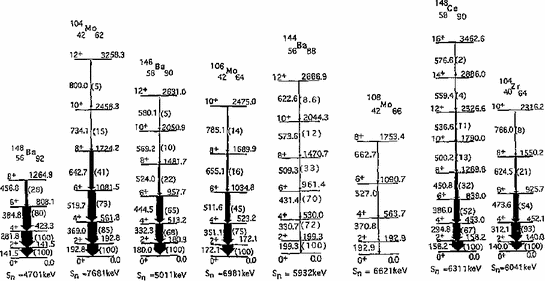We offer to read an annotation, description, summary or preface (depends on what the author of the book "Walter Greiner Memorial Volume" wrote himself). If you haven't found the necessary information about the book — write in the comments, we will try to find it.
Walter Greiner (1935-2016) was a German physicist of the Goethe University, Frankfurt, well-known for his many contributions in scientific research and developments, in particular the field of nuclear physics. He was a well-respected science leader and a teacher who had supervised batches of young collaborators and students, many of whom are now leaders in both academics and industry worldwide. Greiner had a wide interest of science which covered atomic physics, heavy-ion physics, and nuclear astrophysics. Greiner co-founded GSI, the Helmholtz Centre for Heavy Ion Research, and the multi-disciplinary research center, FIAS (Frankfurt Institute for Advanced Studies). Besides numerous professorship with universities worldwide, including the University of Maryland, Greiner received many prestigious prizes in honor of his outstanding contributions, among others are the Otto Hahn Prize and the Max Born Prize. This memorial volume is a special tribute by Greiners former colleagues, students, and friends honoring his contributions and passion in science. The volume begins with a writing by Greiner about his early days in science. The subsequent articles, comprising personal and scientific reminiscences of Walter Greiner, serve as timely reviews on various topics of current interest. Contents: Preface Reflections on My Youth and Early Years in Science (Walter Greiner) The Early Work of Walter Greiner (1960-1968) (erban Miicu) Photon Scattering off Nuclei (Hartmuth Arenhvel) The QCD Phase Diagram from Statistical Model Analysis (Marcus Bleicher, Jan Steinheimer and Reinhard Stock) Why May Hydrodynamics Work for Classical Radiation Field? (Tams S Bir) Chiral Symmetry Restoration and Deconfinement in Heavy-Ion Collisions (E L Bratkovskaya, W Cassing, P Moreau and A Palmese) The Physics Case for the SNN 10 GeV Energy Region (J Cleymans) Untangling Simple Patterns in Intricate Atomic Nuclei (Jerry P Draayer, Kristina D Launey, Toms Dytrych, Alison C Dreyfuss, Grigor H Sargsyan and Robert B Baker) Can One Determine the Neutrino Mass by Electron Capture? (Amand Faessler) Open and Hidden Charm in My Collaboration with Walter Greiner (Mark I Gorenstein) Dark Mater Compact Stars in Pseudo-Complex General Relativity (D Hadjimichef, G L Volkmer, R O Gomes and C A Zen Vasconcellos) Some Aspects of Nuclear Structure (J H Hamilton, A V Ramayya and E H Wang) The Power of the Geometrical Model of the Nucleus (Peter O Hess) Pseudo-Complex General Relativity: Theory (Peter O Hess and Thomas Boller) Observational Tests of the Pseudo-Complex Theory with Black Hole Imaging (Thomas Boller and Peter O Hess) From Strangeness Enhancement to Quark-Gluon Plasma Discovery (Peter Koch, Berndt Mller and Johann Rafelski) Time-Dependent Perturbation Theory as a Basis for Combined Many-Body-Perturbation and QED (Ingvar Lindgren) The Fullerene-Like Structure of Superheavy Element Z = 120 (Greinerium) -- A Tribute to Walter Greiner ( Miicu and I N Mishustin) Cluster Radioactivity -- Past and Future (D N Poenaru and R A Gherghescu) Nuclear Mean-Field Models and Super-Heavy Elements (P-G Reinhard) The Octupole Collective Hamiltonian. Does It Follow the Example of the Quadrupole Case? (Stanislaw G Rohozinski and Leszek Prchniak) Modeling Hybrid Stars (S Schramm) Elliptic Flow and the Nuclear Equation of State (W Trautmann and H H Wolter) Black Holes and High Energy Physics: From Astrophysics to Lar

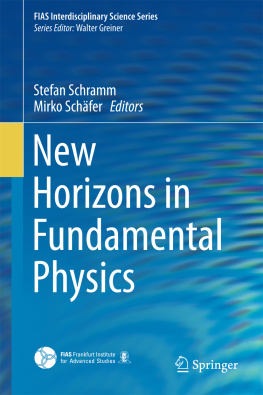

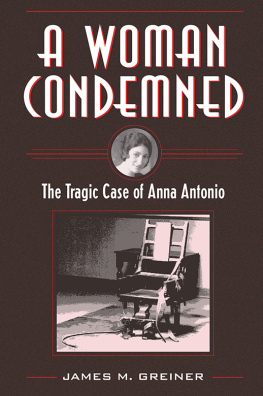
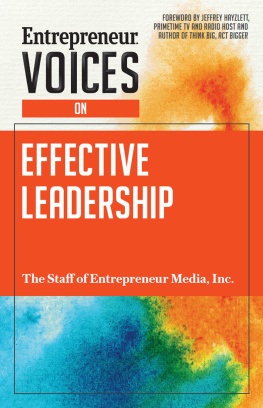

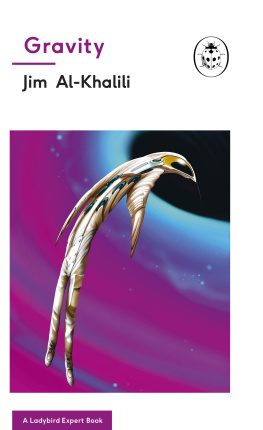
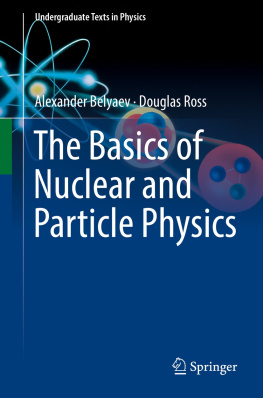
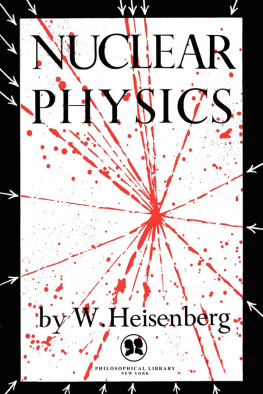


 -vibrational bands in
-vibrational bands in  Gd are compared with the theories existing at the time (1960) showing the best agreement with the rotation vibration model of Faessler and Greiner. In recent years experimental evidences have been found for both one, two, and possibly three phonon
Gd are compared with the theories existing at the time (1960) showing the best agreement with the rotation vibration model of Faessler and Greiner. In recent years experimental evidences have been found for both one, two, and possibly three phonon  bands in the A
bands in the A  103110 region including the first such bands in odd N-even Z and even N-odd Z nuclei. Nuclear shape coexistence was discovered in both
103110 region including the first such bands in odd N-even Z and even N-odd Z nuclei. Nuclear shape coexistence was discovered in both  Se and
Se and  Hg with the Frankfurt Generalized Collective Model reproducing the two different shapes. Cluster radioactivity predicted by Sandulescu, Poenaru and Greiner has been observed. Maximum cluster radioactivity is seen in the zero neutron emission in cold binary and ternary fission of
Hg with the Frankfurt Generalized Collective Model reproducing the two different shapes. Cluster radioactivity predicted by Sandulescu, Poenaru and Greiner has been observed. Maximum cluster radioactivity is seen in the zero neutron emission in cold binary and ternary fission of  Cf. Finally, recent super heavy discoveries of the new elements 115, 117 and 118 are described. The half lives in 117 which is closest in N to N
Cf. Finally, recent super heavy discoveries of the new elements 115, 117 and 118 are described. The half lives in 117 which is closest in N to N  184 on the Island of Stability support the theoretical predictions of the long-lived island.
184 on the Island of Stability support the theoretical predictions of the long-lived island. -vibrational bands in deformed nuclei, through nuclear shape coexistence and the generalized collective model onto superheavy nuclei.
-vibrational bands in deformed nuclei, through nuclear shape coexistence and the generalized collective model onto superheavy nuclei. 
 -vibrational band []
-vibrational band []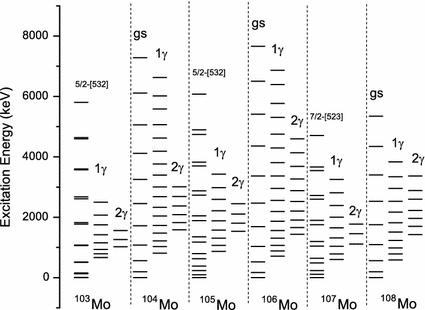
 vibrational bands in
vibrational bands in  Mo. Such bands in
Mo. Such bands in  Mo were newly identified in 2015
Mo were newly identified in 2015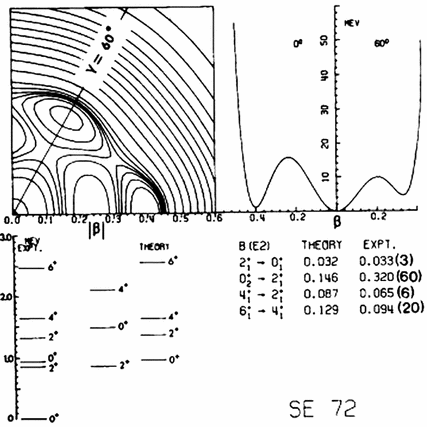
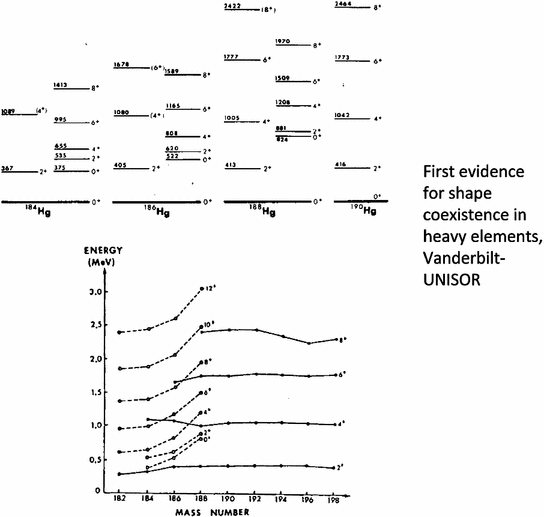
 -vibrational band in an odd-A nucleus in
-vibrational band in an odd-A nucleus in  Mo [ shows a comparison of the odd-A and even-A Mo nuclei where
Mo [ shows a comparison of the odd-A and even-A Mo nuclei where  -vibrational bands are seen. The energies of the one and two phonon
-vibrational bands are seen. The energies of the one and two phonon  bands in the odd-A and even-A are remarkably consistent in
bands in the odd-A and even-A are remarkably consistent in  Mo to provide significant tests of microscopic theories.
Mo to provide significant tests of microscopic theories. Se [. Nuclear shape coexistence is now seen throughout the Periodic Table.
Se [. Nuclear shape coexistence is now seen throughout the Periodic Table. Ba +
Ba +  Mo,
Mo,  Ba
Ba 
 Mo,
Mo,  Ba +
Ba +  Mo,
Mo,  Ce +
Ce +  Zr, (Fig. ].
Zr, (Fig. ]. 